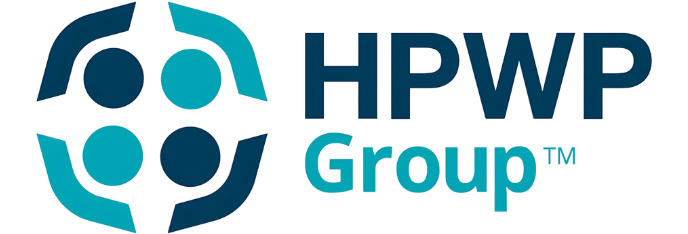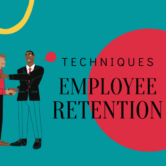How to Hire Employees Who Stay and Succeed

Finding top-tier people goes beyond simply finding someone skilled. It means identifying individuals who share your company’s goals, fit your culture, and stay committed over time. In an age where employee changes are expensive and enduring commitment is unusual, hiring with the future in view is not just wise; it’s crucial.
This guide will show how to make hiring choices that enhance productivity and increase employee stability, guaranteeing your organization gets stronger with each new team member.
The True Cost of Poor Hiring
A wrong hire can cost a company thousands due to decreased productivity, recruiting overhead, training expenditures, and diminished morale. However, a hidden consequence is how bad hires impact overall employee retention. Teams slow down, managers have less time, and departmental engagement can suffer.
Hiring employees who thrive and remain is a clear investment in your culture and operational well-being. It calls for a forward-thinking, values-based strategy—not just skimming applications and doing standard interviews.
Define Success Before You Recruit
Before you even post a job description, ask: What does success in this role look like?
Break it down into:
- Key performance indicators (KPIs)
- Personality traits or behaviors that align with your company culture
- Soft skills needed to collaborate, adapt, and grow
Figure out the traits of your top, long-serving team members. This gives you a guide for future hires, focusing on the type of person, not just their past jobs.
This becomes the base for strong ways to keep employees, because you’ll be bringing in people who will likely feel engaged and loyal from the start.
Write Job Descriptions That Attract the Right Fit
Most job descriptions are transactional: list duties, require X years of experience, and throw in generic perks. If you want employees who stay and succeed, your job description must communicate:
- What the company values
- What success will look like in 6, 12, and 24 months
- Opportunities for growth and development
- The type of environment the person will join (collaborative, fast-paced, flexible, etc.)
Top performers don’t just want a job—they want meaning, mastery, and belonging. Crafting job descriptions that reflect these aspects will attract candidates who already align with your long-term vision.
Focus on Culture Add, Not Just Culture Fit
Hiring based on “culture fit” is common, but it can hinder diversity in perspectives and experiences. Instead, seek candidates who can “add to” your culture—those who align with your values yet offer fresh viewpoints and skills, benefiting the team.
This approach promotes innovation and inclusion, crucial for lasting engagement and keeping employees. Individuals are more likely to stay in places where they feel understood, respected, and appreciated for their uniqueness.
Strengthen the Interview Process
The interview process is your best opportunity to dig beneath surface qualifications. To hire people who will thrive long-term, structure your interview process around:
1. Behavioral Interview Questions
These help predict future performance by examining past behavior:
- “Tell me about a time you had to adapt to a major change at work.”
- “Describe a situation where you had to overcome a setback. How did you respond?”
2. Scenario-Based Interviews
Present candidates with real-world challenges they’ll face in the role and ask how they’d approach them.
3. Team Interviews
Let potential hires meet the team they’ll work with. It provides insight into dynamics and allows you to assess chemistry and compatibility.
A consistent and structured process ensures fairness, reduces bias, and highlights candidates who are not just capable—but committed.
Onboarding is Your First Retention Tool
Hiring doesn’t end with a job offer. A strong onboarding experience lays the groundwork for loyalty and performance. Employees decide within the first few months whether they see a future with the company.
Effective onboarding should include:
- Clear role expectations
- Frequent manager check-ins
- Exposure to company values and culture
- Opportunities to connect with colleagues
- Early wins to build confidence
A great onboarding experience is one of the most overlooked employee retention strategies, yet it can dramatically impact engagement and satisfaction in the first year.
Provide Pathways for Growth
No matter how skilled or enthusiastic a new hire is, stagnation will lead to disengagement. People stay with organizations that invest in their growth.
To retain and develop your best people:
- Offer learning and development resources
- Create career progression plans
- Recognize and reward accomplishments
- Promote from within when possible
Employees who see a clear future at your company are less likely to look elsewhere, and more likely to grow into leaders.
Gather Feedback and Improve Continuously
Hiring for longevity isn’t a passive approach. Get input from new hires about their recruitment and onboarding journey. Monitor data on employee tenure and the reasons for departure.
Use this understanding to improve your hiring process, better manage expectations, and foster a work environment that benefits all team members.
Final Thoughts
Finding employees who remain and excel goes beyond just matching qualifications with job openings. It involves thoughtful planning, value-driven choices, and a forward-looking approach to expansion. Each phase, from writing genuine job descriptions to providing useful onboarding and advancement prospects, is essential for retaining staff over time.
When your hiring methods are bolstered by focused employee retention strategies, you’ll find high-performing, committed team members who boost your company’s progress for years. The outcome? A more robust team, a positive work environment, and a business set up for lasting success.










